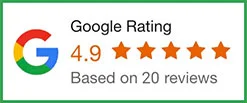Data analytics is your key to unlocking insights and optimizing your SEO strategy for maximum impact. Here’s how:
1. Identify Performance Gaps:
- Traffic sources: Analyze organic, referral, and direct traffic trends to identify channels needing improvement. Investigate reasons for traffic declines or missed opportunities.
- Landing page performance: Use tools like Google Analytics to see which landing pages drive the most organic traffic and conversions. Identify underperforming pages for optimization.
- Keyword rankings: Track rankings for targeted keywords and identify areas where you’re losing ground. Analyze search intent and optimize content accordingly.
2. Understand User Behavior:
- User engagement metrics: Analyze bounce rate, session duration, and page views to understand how users interact with your content. Address high bounce rates or low engagement.
- Click-through rates: Evaluate CTR data to see how compelling your search results are. Optimize titles, meta descriptions, and featured snippets for better CTR.
- Internal linking analysis: Explore internal linking structure to identify orphaned pages and optimize navigation for better flow and link juice distribution.
3. Dive Deeper into Backlinks:
- Backlink profile quality: Analyze domain authority, relevance, and anchor text distribution of your backlinks. Identify and disavow spammy or low-quality links.
- Competitor backlink analysis: Benchmark your backlink profile against competitors to identify gaps and potential link-building opportunities.
- Track new and lost backlinks: Monitor link profile changes to understand ongoing efforts’ impact and identify lost links for potential outreach.
4. Leverage Technical SEO Analysis:
- Core Web Vitals: Use tools like Google PageSpeed Insights to measure and optimize loading speed, responsiveness, and visual stability. Prioritize Core Web Vitals for user experience and SEO.
- Mobile-friendliness: Ensure your website offers a seamless experience across all devices. Use Google’s Mobile-Friendly Test and optimize for mobile accessibility.
- Structured data implementation: Analyze structured data implementation for accuracy and completeness to enhance search engine understanding of your content.
5. Stay Ahead of the Curve:
- Emerging trends: Track changes in Google’s algorithms and industry trends. Adapt your strategy based on updates like entity SEO, voice search optimization, and local SEO best practices.
- Content performance analysis: Analyze content performance based on traffic, engagement, and conversions. Identify high-performing topics and formats to replicate success.
- Experiment and iterate: A/B test different approaches and track results to see what works best for your audience and specific goals.
Remember:
- Focus on actionable insights: Don’t get lost in data, focus on extracting actionable insights to guide your SEO efforts.
- Combine with qualitative data: Combine data analytics with user feedback and competitor analysis for a holistic understanding.
- Set clear goals and KPIs: Align your data analysis with your overall SEO goals and objectives to measure progress effectively.
- Use the right tools: Leverage web analytics platforms, backlink checkers, and technical SEO tools to gather and analyze your data efficiently.
By harnessing the power of data analytics and continually optimizing your strategy, you can achieve sustainable SEO success and attract more qualified visitors to your website.





